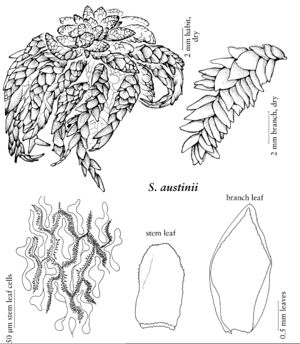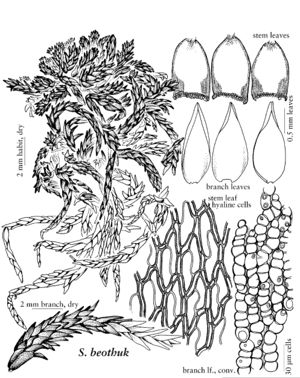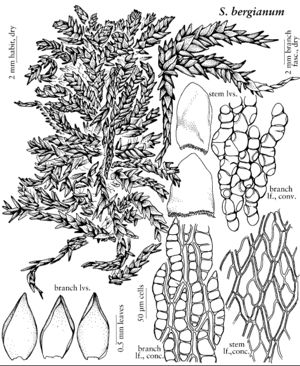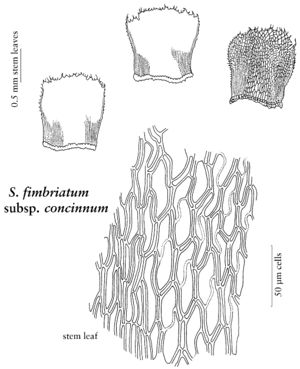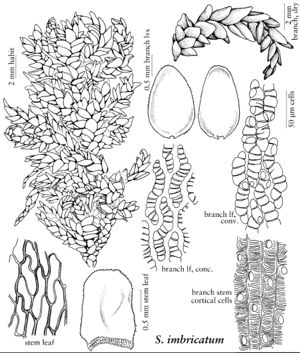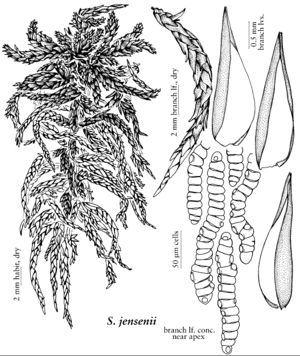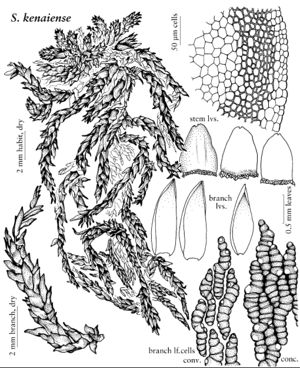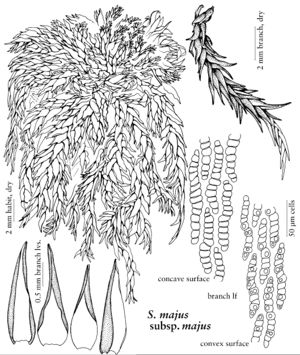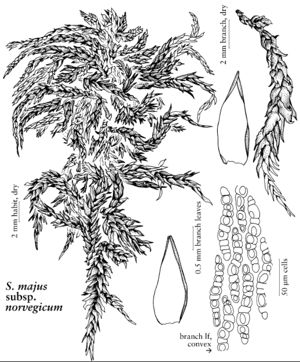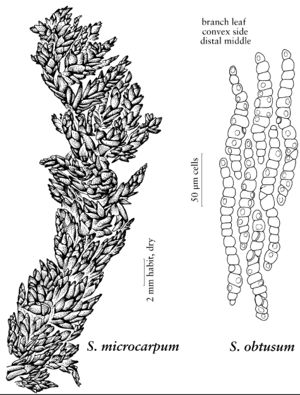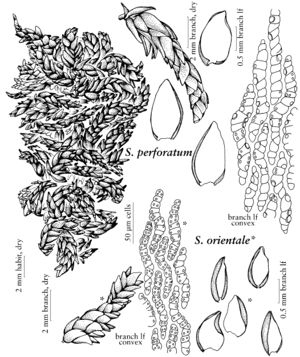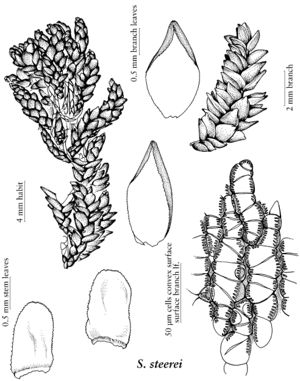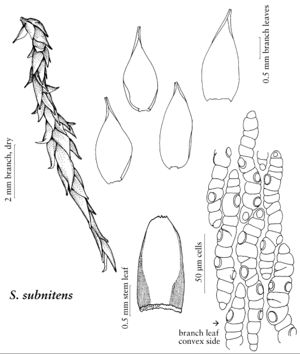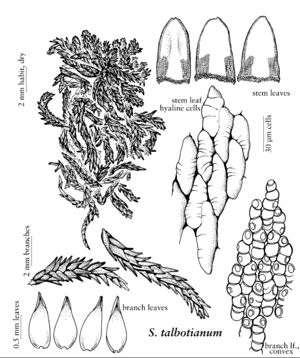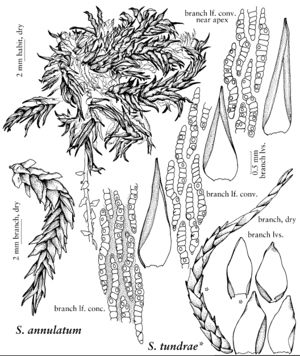Plants with branches in fascicles, branches usually of spreading and pendent types but rarely spreading only. Protonemata thallose. Leaves usually of two distinctly different types; branch leaves that normally inrolled and broadest ca. 1/4–1/3 the distance from the base, more or less tapered to a cucullate to involute apex; stem-leaves more or less flat and usually broadest at the base; both leaf types of a network of hyaline, dead cells and green chlorophyllose cells; pores and reinforcing fibrils frequent in branch leaf hyaline cells and uncommon in stem-leaf hyaline cells. Rhizoids lacking. Sporophytes consisting of a spherical capsule with pseudostomata on capsule surface, a very short seta, and a foot, exserted on a pseudopodium of gametophyte tissue. Spores released by explosive opening of operculum.
Distribution
Nearly worldwide
Discussion
The sphagnum mosses, or peat mosses, are unique not only morphologically but also ecologically. With their abundant clear cells they can retain up to 25 times their dry weight in water, and a uniquely strong acidifying power permits sphagnum to direct succession wherever conditions are suitable for them to flourish. Much of the earth’s surface with a cool humid climate is dominated, thus, by sphagnum peatlands.
Genus 1, species ca. 285 (89 species in the flora).
Selected References
None.
